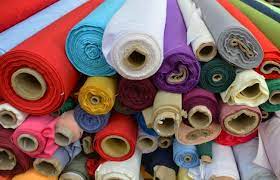DIFFERENT TYPES OF CHEMICAL FINISHING PROCESSES ON FABRICS
Once a fabric is produced it goes through different processes before the final product is achieved. The treatment involves three stages namely
- Pre-treatment or preparation
- Colouration- dyeing or printing
- Finishing

The finishing of the fabric is also called the beautification of fabric. It is the last chance to enhance the properties of the fabric which are beneficial to the users. Finishing with chemicals refers to modifying the fabric’s properties through chemical means. This is done prior to the fabric being converted into a garment, and it is sometimes called wet finishing. Normally, chemical finishing does not change the appearance of a fabric. Several factors are considered before deciding which type of process will be used on the fabric:
- The type of textile: fibre composition
- Enhancement properties
- Availability of machinery
- Environmental concerns
- Compatibility and interactions of the final product
Let’s have a look at the different types of chemical processes:
- PARCHMENTENSING: Adding an aesthetic value, this process is used on cellulosic fibres such as cotton. These fibres are treated with concentrated sulphuric acid thereby achieving the properties of parchment. A slight stiffness and sheerness are gained while giving it a lustrous finish.
- ANTI-SOIL FINISH: Just hearing the word soil, creates a pessimistic effect. As a result of this method, soil is minimized from coming into contact with the fabric, which increases its durability. The fabrics are finished with different anti-soil finishes to make sure they don’t get dirty easily and to make stains easier to remove. Some of the types of unwanted substances are:
- Oily stains
- Water-borne stains
- Dry particulate soils
- Composite soils.
The dual action is taken for making the fabrics repel more dirty substances.
- WRINKLE-FREE FINISH: As the name suggests, this method is used for reducing creases on the fabrics after the printing job work is done. The wrinkle-free finish can be achieved by either the pre-cure process or the post-cure process. Fabrics without pleats can benefit from the procuring process. In the post-curing process, however, chemicals are distributed equally. Wrinkle-free finishes are chemical processes that prevent fabrics from getting creased easily.
- FLAME RETARDANTS: These are chemicals that are applied to the fabrics to slow down the process of combustion. For cotton fabrics, several durable fire retardants have been developed in response to the need for nonflammable textiles. There have been several studies that have evaluated the suitability of phosphor amide derivative flame retardants for treating cotton fabrics.
- WATER REPELLANTS: This type of finish is used on fabrics to make them waterproof and is one of the most common practices in the textile industry. An angle greater than 90° is used when applying the finishing chemical to achieve the lowest surface tension possible for the fabric. There are several substances that are used due to their low surface tension, including waxes, chrome complexes, silicones, and fluorochemicals.
- ANTIMICROBIALS: Textiles that undergo the antimicrobial finishing, attain the properties of repelling the growth of any type of bacteria, fungi, algae or viruses. Such fabrics are used in the pharmaceutical industry and hospitals or wherever hygiene is of utmost importance. Also, deodorizing and anti-microbial processes are becoming a common practice these days.
The last step is always the most important as it determines the outcome just like the process of chemical finishing which ascertains the overall look of the fabric. Chemical finishing is practised more as makes the product more marketable and it is cost-effective as well. These finishes can be durable or non-durable, depending upon the chemical properties and attributes of the fibres.














